Producers
-
Description:
Juan Jesus is a proud native of Tenerife and the fourth generation of growers in the island. During the twenty-five years that he’s overseen Bodegas Viñátigo, he has considerably increased its holdings, planting varieties that he and his team recuperated. During these years he has also juggled the classes he teaches as a professor of viticulture and enology at the Ciclo Superior de Vitivinicultura. Juan Jesus and his wife Elena Batista – who has helped along the way, dealing in all aspects of production, from the vineyard to the cellar – have worked closely with Fernando Zamora from the famous Rovira I Virgili Universtiy in Tarragona, to study, catalog, preserve, and vinify imperiled indigenous grape varieties.
Varieties such as Baboso Negro and Vijariego Negro are known to us now by these names mainly because of the work of this duo who identified more than eighty different varieties in the Canary Islands. They recovered those varieties from the island of El Pinar and have since propagated them in Tenerife.
Now however, the new generation slowly started taking over, and his son Jorge Mendez, who studied viticulture in Madrid is in charge of the farming. While the work in the vineyard and winery has always been sustainable, now with Jorge all of Viñátigo’s holdings are farmed organically, and many are being treated biodynamically. Another addition to the team has been Juan Jesus’ daughter, Celia Mendez, who is in charge of marketing and other business aspects such as educational work and sales. The family works collaboratively, constantly exchanging ideas and viewpoints.
The grapes are hand-harvested and fermented using indigenous yeasts. Grapes go through two triages, first in the fields and then again in the winery. Minimal sulfur is used in the winery and no synthetic materials are used in the winemaking.
Image: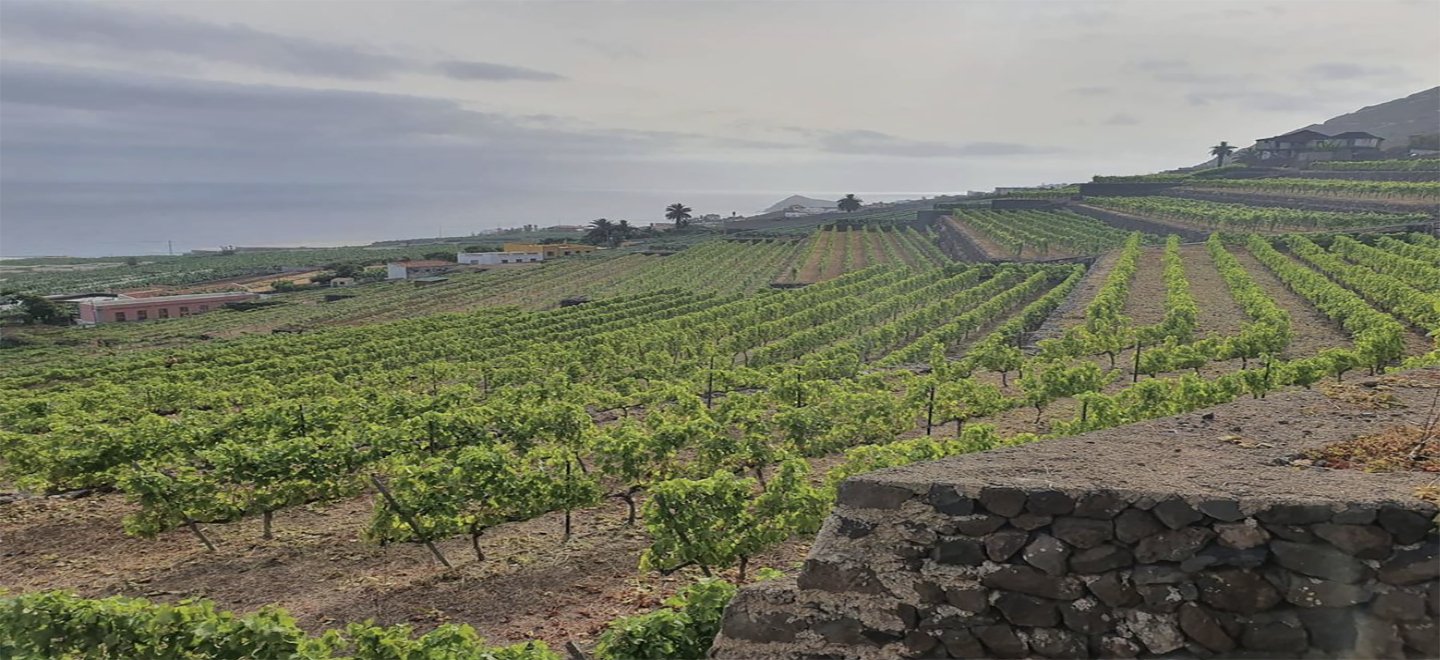 Region:
Region: -
Description:
These wines are some of the best "hidden gems" of the Bowler value portfolio. Vinified exclusively for us by a fantastic family-owned estate in Abruzzo (which must remain nameless here), the Montepulciano and Pinot Grigio under the Politici label are actually small production wines, estate grown, and EU certified Sustainable, Certified Vegan and Certified "low carbon footprint" in Italy. The wines are bottled in liters as a nod to the tradition of casual "country wines" poured in Italy at parties, holidays, and family gatherings. Fruity, lively, and pure, they are wines to celebrate with--even if it's only on a Tuesday night with pepperoni pizza.
Image: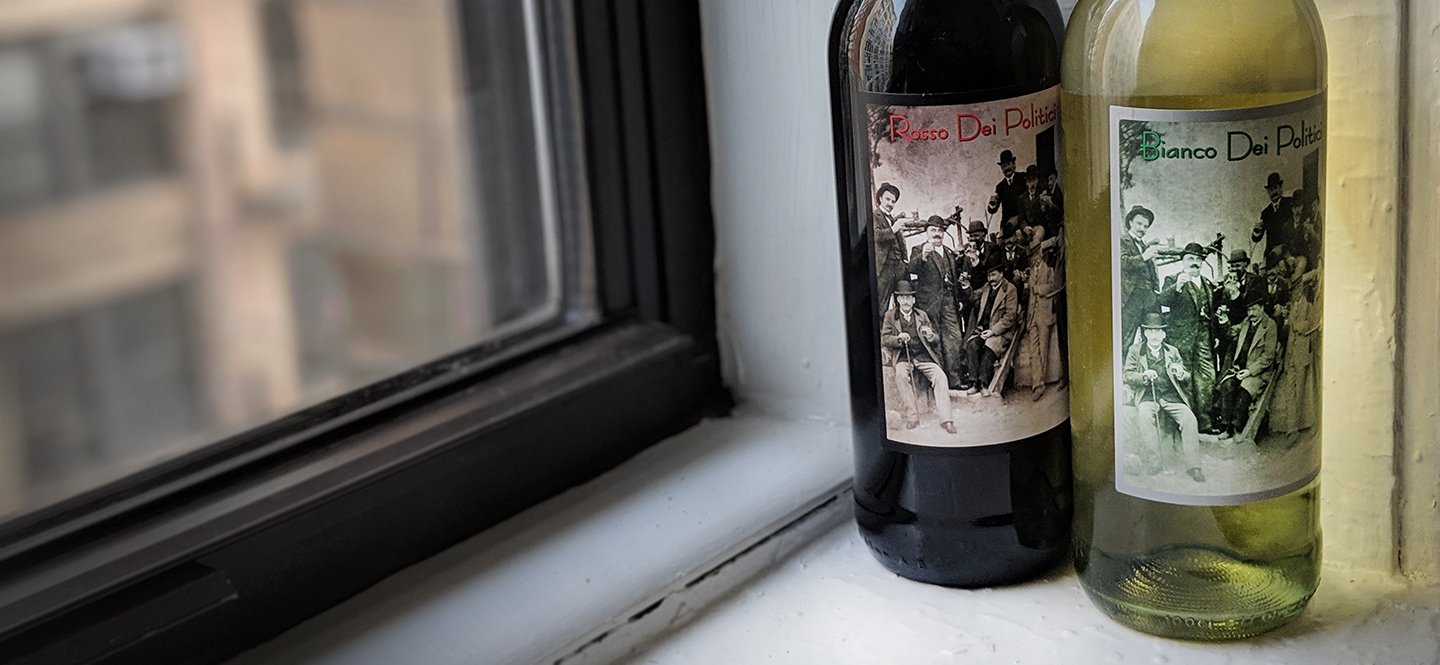
-
Description:
This venerable fifth-generation domaine has holdings in the top vineyards of both Volnay and Pommard. Joseph Voillot's son-in-law, Jean Pierre Charlot, is now the managing director; he worked closely with Joseph from 1980 until Joseph’s retirement in 1995.
For many years, Jean Pierre was a professor at the Lycée Viticole in Beaune, where he taught several of Burgundy’s rising stars. He’s a meticulous man, and what interests him is handling the challenging years when the vineyard work, triage at harvest, and careful cellar practices really pay off. It’s immediately evident when tasting through the domaine’s range that these are true “vins de terroir” (thus the judicious use of new oak), and each wine at every level reflects its origin. Anyone who wants to grasp the essence of Volnay and Pommard needs to look no further than Domaine Joseph Voillot.
Image: Region:
Region: -
Description:
Volans is the brainchild and passion project of Cristina and Chad Allen. Chad, an Idaho native, married Christina, whose family is from Jalisco, in 2007. Sharing a mutual love for agave spirits they decided together to embark on their dream: to produce and market their own, premium tequila. Of course, that meant enlisting friends and family in the process, a tradition that not only continues but is essential to their success.
Cristina’s father Miguel is an agronomist who raises agaves, avocados, & blueberries in Jalisco and Michoacán. It was Miguel who found the field, planted it, and who continues to tend their precious agaves. Finding a distillery was trickier. The search was not only to find a high-quality distiller but to find a place that shared the same values. Miguel was in Arandas at a fair in the central square when he got a chance to sample the tequilas from the well known and highly regarded El Pandillo distillery. He visited them the next day and over the next couple of months a partnership developed.
The distillery in Jesus Maria, is run by Master Distiller Felipe Camarena, of the Camarena family of tequila makers. Felipe began construction of El Pandillo in 2007 after spending most of his life working at the family distillery “La Alteña” in Arandas, Jalisco, Mexico. He created and designed his new distillery to be efficient and sustainable while keeping with long held traditions to the process of making tequila.
Felipe is also trained as a civil engineer. His innovative designs for the production of his tequilas are unique to the tequila industry. The ovens were built with steam jets placed both at the bottom and top of the oven, ensuring that the agaves cook evenly. They slow-cook their fully mature Blue Agave for 22 hours at 94 degrees, then let them cool for another 24-36 hours.
Felipe calls his shredder “Igor,”. It is hand built and designed to use special steel blades to grind up large, cooked agaves quickly. It is gravity fed and uses a measly 15-horsepower electric motor to drive it. His mechanical tahona was made from spare parts found in a junkyard. A steam roller wheel with bolts soldered to it and powered by a small electric motor, does the work traditionally done by a mule or tractor.
He created warming tanks for his musto (fermented agave juice) by using the heat coming off the top of the copper pot stills. The Musto ferments for five days --even going as far as insulating his copper stills to retain heat so he uses less energy. The water used in fermentation and distillation of agave has an impact on the flavor profile of tequila, so the roof of the distillery is a rainwater collection system, leading to a 200,000 liter underground storage tank. They also source their water from a natural spring and deep well right on the property.
Volans has quickly gained a reputation for quality. Their tequilas are now highly sought after and in great demand. And the reasons are clear, uncompromising, and dedicated to tradition and innovation. Christina and Chad’s dream is now available for the world to experience and taste and enjoy.
Please reach out to your Bowler rep and sample these extraordinary offerings, Salud!Image: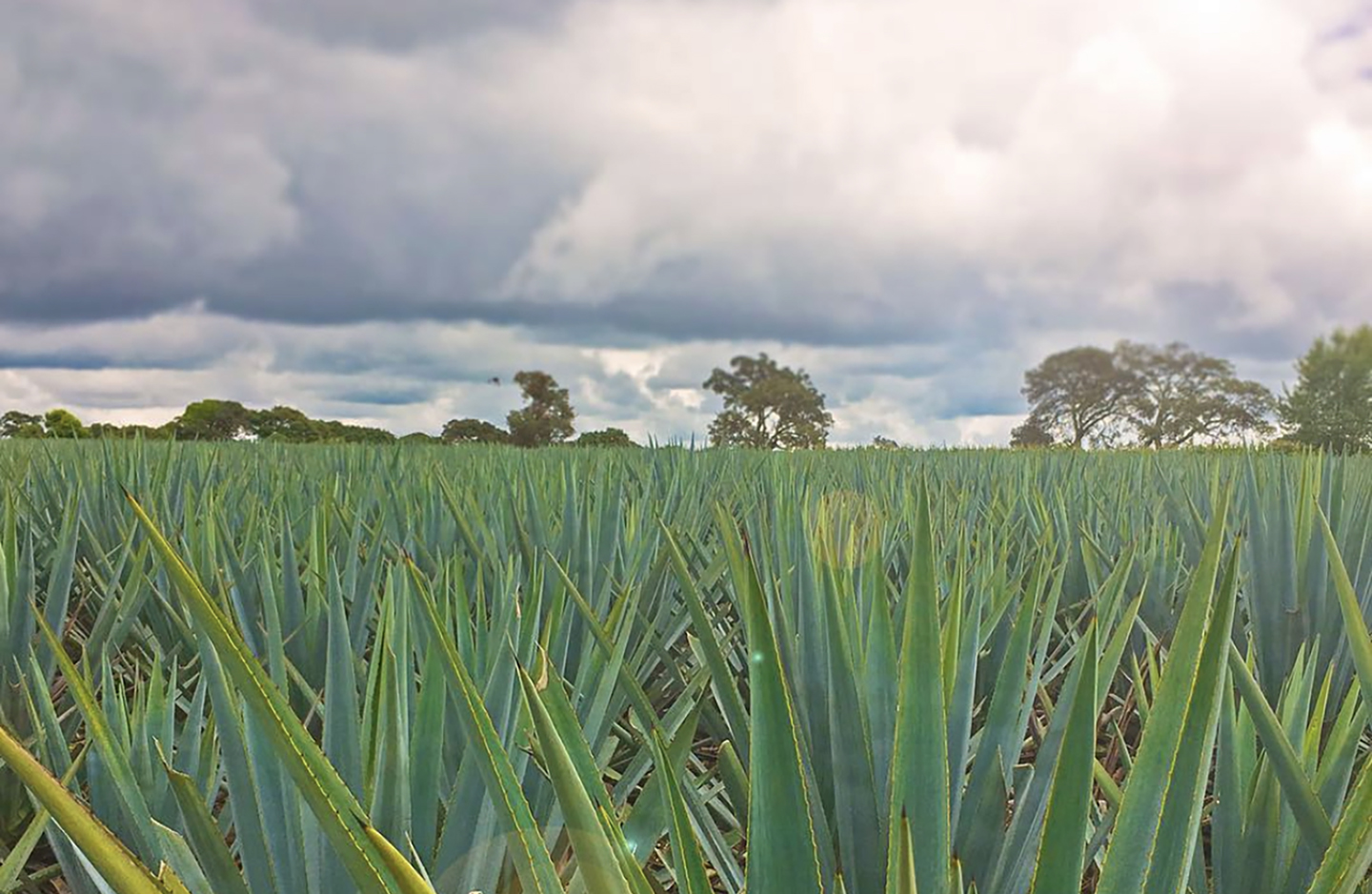 Region:
Region: -
Description:
"Located in Dross at the northeastern edge of the Kremstal and just west of the Kamptal, the Vorspannhof has long enjoyed a fine reputation, but I had not visited there since 2006, the year in which proprietor/winemaker Silke Mayr began a collaboration with Walter Buchegger, whose family holdings are in Gedersdorf east of Krems.... Buchegger is currently taking the leading role in both vineyards and cellars, freeing Mayr to spend more time raising their young children. The soils here are divided among loess, conglomerate and gravel, and some of what gets referred to as “brown earth, in other words,” explains Buchegger, “where traditionally there was grain growing, not vines.”
—David Schildknecht, Vinous, November 2015.
Image: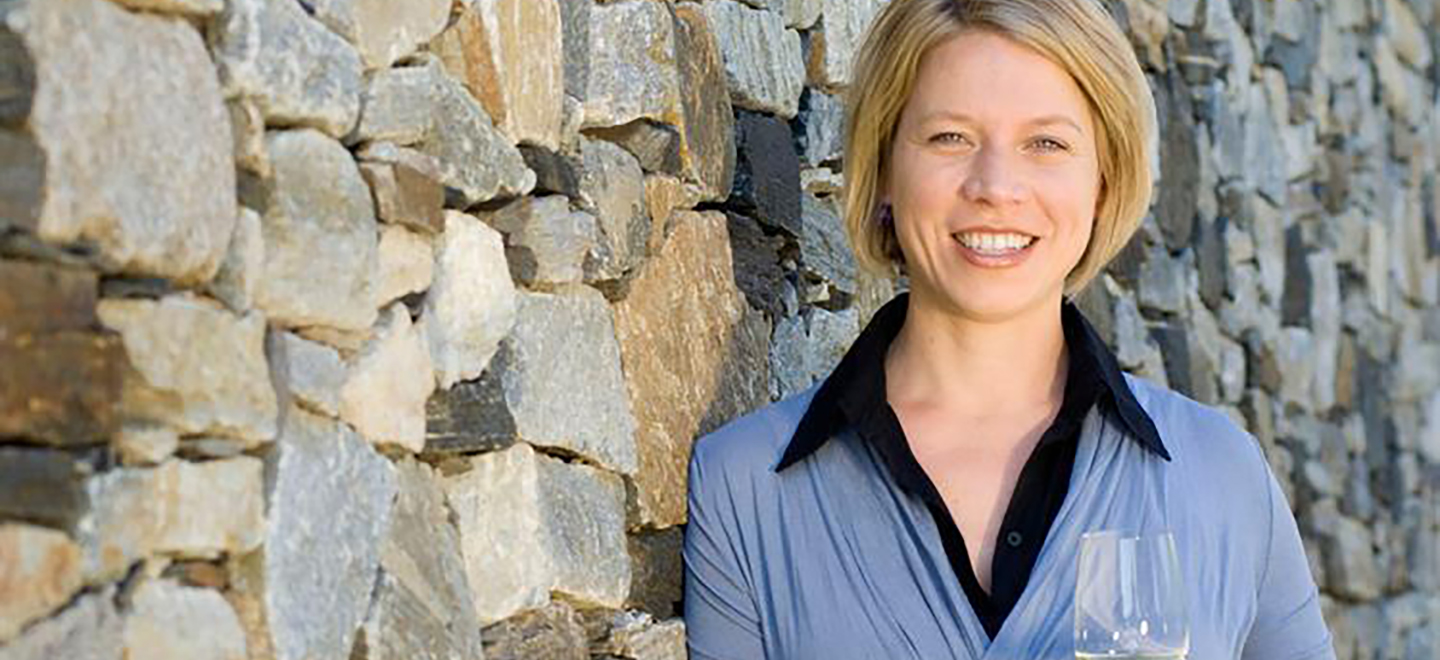 Region:
Region: -
Description:
Christoph Wachter began working at his family winery in 2008 when he was just twenty years old. He took over full responsibility in 2010, and now farms sixteen hectares of vineyards in Südburgenland, in the towns of Eisenberg and Deutsch Schützen. His credo, "Wine is the most interesting, natural and authentic when you recognize its origin. After that, all of our efforts are aligned - and so our grapes grow as close to nature and with as little outside influence as possible. The character comes entirely from the soils of Deutsch-Schützen and Eisenberg."
When Wachter started in 2010, he stopped using herbicides and pesticides entirely. Today, he is one of only three producers in Südburgenland who is farming organically and is certified as of the 2018 vintage. In 2012, he studied biodynamic farming for two years and he applies some biodynamic techniques today. He allows the weeds to grow in his vineyards, as they attract beneficial insects and eventually return to the soil as nutrients themselves. Rather than add fertilizer, he leaves the vines to extract what they need from the soil itself, thus instilling the wines with minerality and allowing them to express their unique terroir. Only native yeasts are used in the cellar. Wachter ferments his wines twenty to thirty percent whole-cluster, and ages in large barrels that allow the wines to mature gracefully without obscuring them with oak flavors.
The wines of Eisenberg / Sudburgenland are very unique expressions of Blaufrankisch grown on green schist; most Blaufrankisch comes from the limestone soils of Mittelburgenland. The biggest difference between Burgenland and Südburgenland is the soil and micro-climate. In Südburgenland, the vines grow in primary rock, and the most prized terroir is the green schist of the Eisenberg hill, regarded as one of the finest sites for producing Blaufränkisch in Austria, giving wines of great finesse and focus. The Eisenberg DAC includes wines from the surrounding villages, including Deutsch-Schützen, where you find iron rich loam and clay on top of the green schist subsoil. Deutsch-Schützen’s soils are dense with a deep layer of loam, resulting in dark and spicy wines with soft tannins. Südburgenland is cooler than Mittelburgenland and there are rolling hillsides, small mountains really, called the pre-Alps, topped with forest; this regulates the temperature, another aspect of the micro-climate of Südburgenland. Harvest here tends to start two weeks after Mittelburgenland. Sudburgenland, with 500 hectares planted is considerably smaller compared to Mittelburgenland with 2,100 hectares.
In the summer of 2019, we were able to meet with Wachter in Eisenberg and we tasted through his new 2017's. He modestly admits that this is perhaps the best vintage that he has made to date. It finally was the first "normal" vintage since 2012 with great weather - no hail or drought - the first vintage since 2012 with great quality and quantity. It allowed Christoph to launch an idea that he's had in mind for a few years. In addition to his single vineyard wines, he will bottle two village level wines, one from Deutsch Schützen and one from Eisenberg. And he made four single-vineyard wines: Weinberg, Ratschen, Saybritz, and Reihberg. His cuvee Bela-Joska remains the flagship of the winery. It's named after his two grand-fathers and the cuvee was first bottled in 1992.
The Wachter-Wiesler wines are some of the most exciting red wines made in Austria today. Wachter-Wiesler wines have silky texture, floral aromatics, great energy, and elegance - truly Blaufränkisch at its finest.
Image: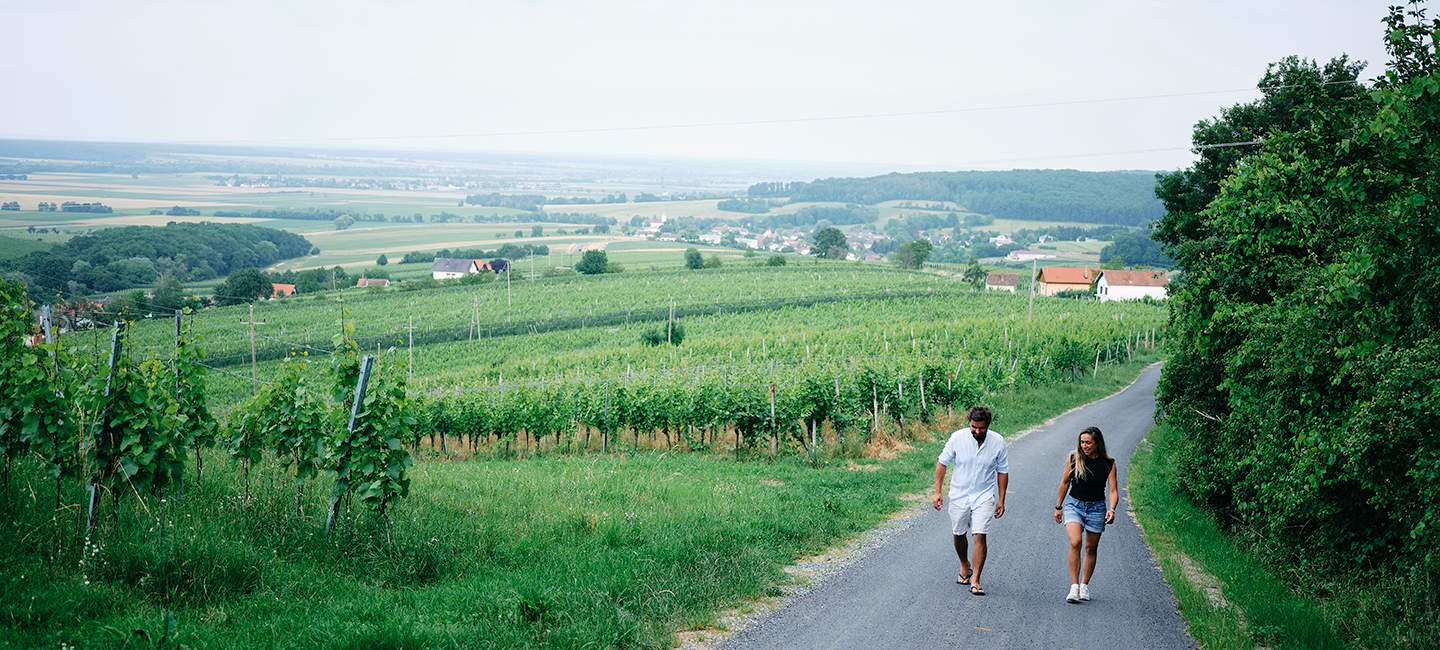 Region:
Region: -
Description:
The Obermosel is the southernmost part of the Mosel river, south of the Saar near the border of Luxembourg. Just next door is the Sauer Valley, where Michael Fürst operates his small family estate, one of the area's last surviving wineries. The Fürst family has grown grapes and other crops at their estate since the 13th century, and Michael is the third generation to make wine under the family name. From his rolling slopes of limestone, he offers a slew of light-bodied, fun-spirited whites and reds. We are enthralled by his delicious, single vineyard Sauvignon Blanc, a rare sighting in Germany, and a revelation for fans of this grape. But the main focus here is on the historic Elbling grape, a great old Germanic variety once planted more widely than Riesling in Germany. Today its range is limited to the cool, steep banks of the Obermosel, Sauer, and neighboring Luxembourg. There are 12 hectares of Elbling planted at Fürst, 70% of which are old vines, 25% between 10-20 years old, and 5% young. His total Elbling production is under 10,000 cases and the quality is high, vintage after vintage. We are very proud to represent one of the few small family wineries still working with this fascinating grape variety.
Image: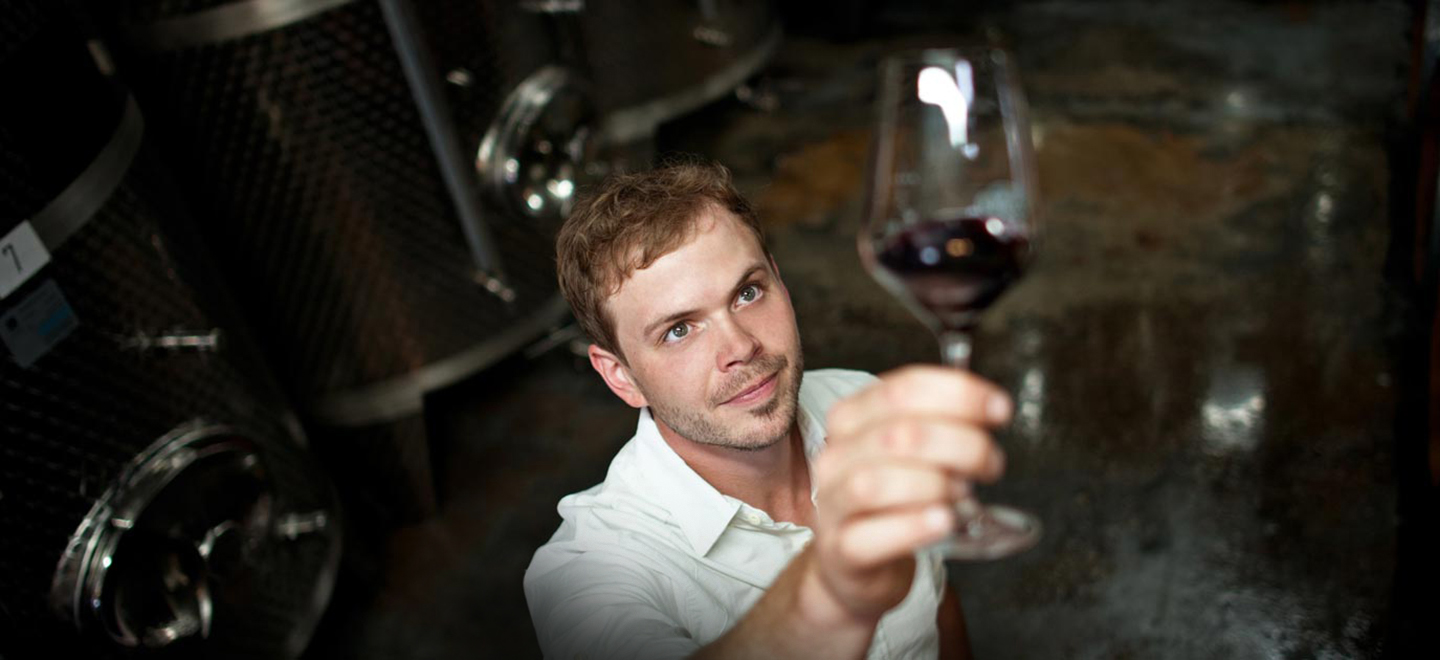 Region:
Region: -
Description:
Josef Ehmoser and his wife, Martina, are crafting world-class wines in the Wagram, a region known for its deep loess soils that can go to a depth of twenty meters before hitting marine sediment. Josef took over the 17 hectare winery from his father in 1996. The Ehmosers philosophy in regards to winegrowing is to respect nature in the vineyards and in the winery, to highlight the personality of each wine without forcing it on a prescribed path.
As of 2018, they are certified sustainable by the Lacon Institute, which was not a big shift for them in the vineyards. And in 2020, they begin the certification for organic agriculture. For years, they have not sprayed herbicides or pesticides. They have used minimum treatments as needed for mildew. They follow the weather and weather forecasts very closely and act accordingly. If it is hot and dry for many weeks, then treatments against mildew are not necessary. They do not spray against cochylis and eudemis moths, opting to use sexual confusion dispensers with pheromones instead. They do not drive through the vineyards often with the tractor to keep the ground and soil loose and to minimize compaction. They grow grass in the vineyards and keep it longer if it is raining a lot, to have competition for water and taking it from the vines. If it is too dry, they cut the grass short, giving enough water to the vines. They do not irrigate. At the winery, they have solar panels for heating and warm water. There is no need to heat or cool the tank rooms in the cellar as they are partially underground eight meters in the cool loess. At harvest, the grapes are harvested by hand, which is not required in the Wagram.
Loess in this area has a 30% limestone content and is great for Grüner Veltliner and Weissburgunder. Weissburgunder (Pinot Blanc) has a long history of being planted in the Wagram. The wines are mostly fermented and aged in stainless steel, with the exception of the Weissburgunder, which is aged in large barrels, one 1500L and one 3000L. The wines are normally kept on the lees until they are bottled. The Ehmosers want to stick to tradition and only plant varieties that are native to the area. The Ehmoser wines are classic - clear, straight, and pure wines that distinctly express the famous loess soil of the Wagram.
Image: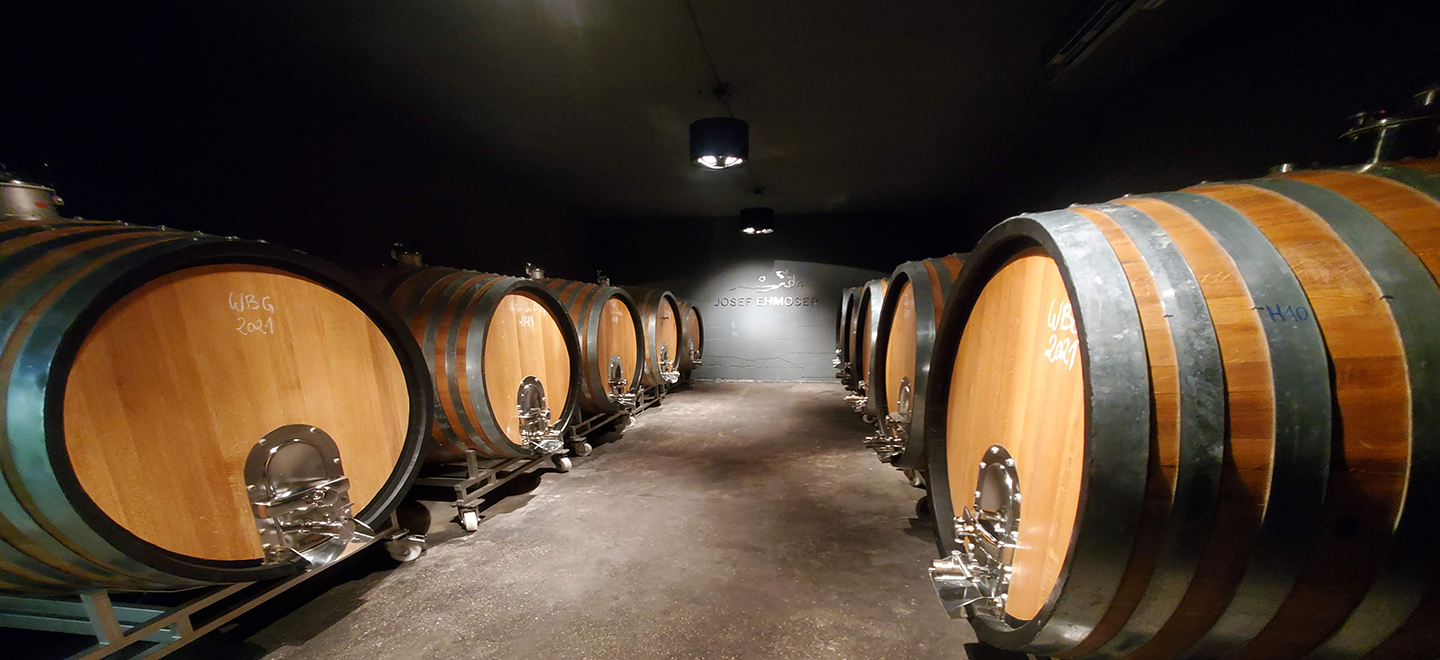 Region:
Region: -
Description:
Weingut Jurtschitsch is one of the most prestigious wineries in Austria. Having previously been run by the three brothers Edwin, Paul and Karl Jurtschitsch, the family-owned winery has now been in the hands of Alwin Jurtschitsch and his wife, Stefanie Hasselbach (of Gunderloch fame in the Rheinhessen) for more than ten years.
Alwin and Stef are leaders of the natural wine movement in the Kamptal. When Alwin and Stef started working in 2006, they insisted with Alwin’s father and uncles on converting all the vineyards to organic viticulture. In the vineyards, they are continually improving how they work: replanting more densely, using whey to treat for mildew instead of using copper sulphate, and working with new pruning methods. All the vineyards are certified organic and protecting biodiversity has always been a priority. Jurtschitsch explains that, “The more life you have in the vineyard, the more stable the entire system is.” Wild life is abundant in the Jurtschitsch vineyards, with many fruit trees, grass, garlic, wildflowers and butterflies fluttering amongst the vines.
Jurtschitsch aims for a classic style of Kamptal wines, but more like an old-style of classic, that was made by their grandparents. This means, emphasizing the cool climate of Austria and making wines with finesse that strike a balance of ripe fruit and fresh acidity. Stefanie Jurtschitsch manages the winemaking and she is making wines which let the vineyards and soils speak for themselves. They only use spontaneous fermentations and work without any additions, aside from minimal sulfur. The entry-level wines are made in stainless steel, but all the single vineyard Erste Lagen wines are aged in large oak foudres. As of 2016, they have started a second line of wines called, 'Discoveries of Langenlois' which are bottled under "Alwin und Stefanie Jurtschitsch". These wines push boundaries and allow them to play outside of the classic style, opting for skin contact, and low to no sulfur. Although the two lines show different expressions, the essential is that the farming is the same and both are low intervention in the cellar; they are two sides to the same coin. The wines shine in multi-faceted elegance, offering drinking pleasure at highest level without being baroque and heavy.
Image: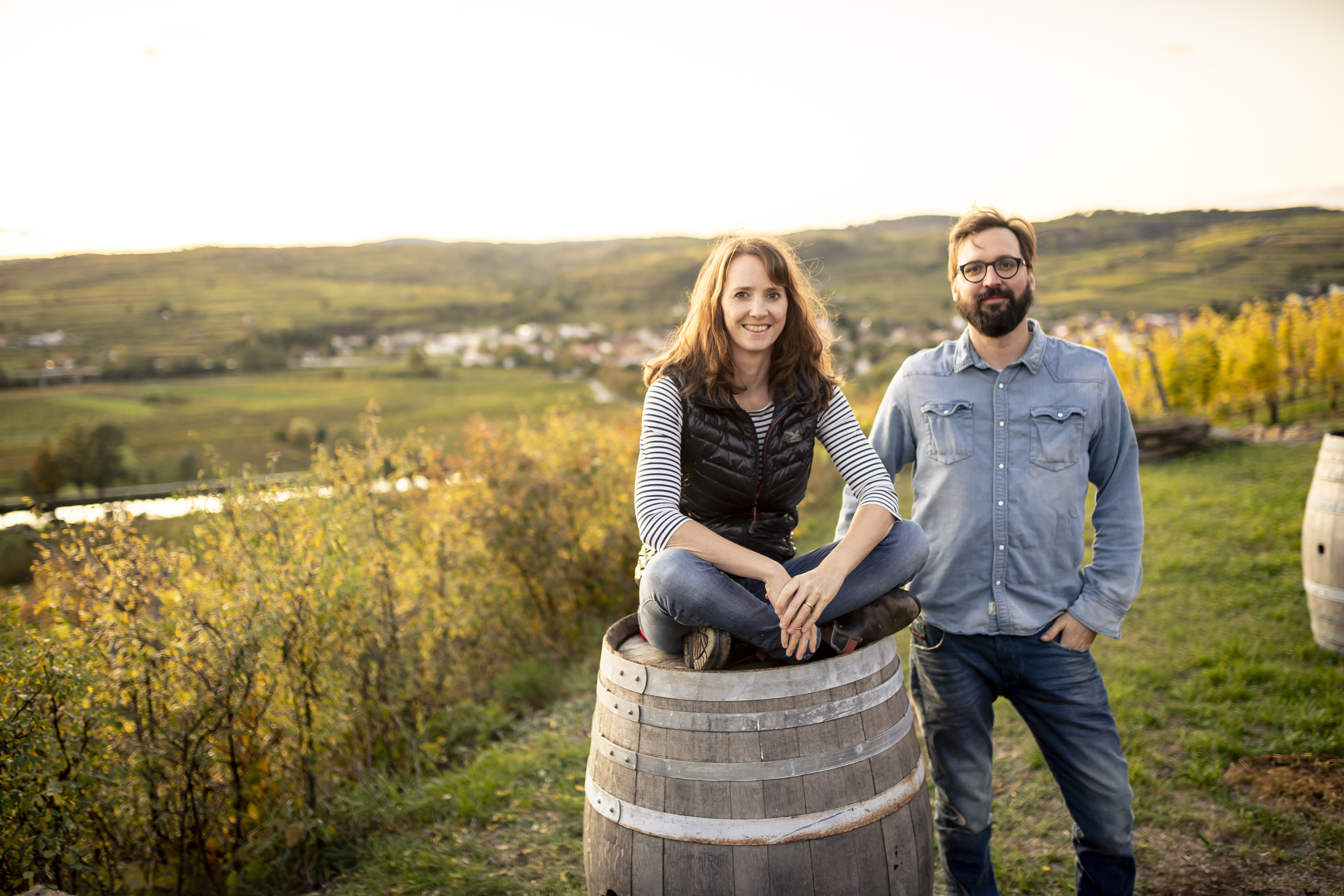 Region:
Region: -
Description:
The origin of soju dates back to the 13th century Goryeo, when the Levantine distilling technique was introduced to the Korean Peninsula during the Mongol invasions of Korea from 1231–1259. The Yuan Mongols had acquired this technique of distilling arak from the Persians.
Soju referred to a distilled beverage with 35% ABV until 1965, when diluted soju with 30% ABV appeared with South Korean government’s prohibition of the traditional distillation of soju from rice, in order to alleviate rice shortages. Diluted soju has showed a trend towards lower alcohol content. The ABV of 30% fell to 25% by 1973, and 23% by 1998. Today Soju has an ABV range of 17-25%. Soju is the #1 selling distilled spirit in the world and is traditionally served by the bottle as a “table vodka,” consumed by sipping or shooting neat. While typically served in Korean restaurants, a growing number of people are seeing the benefits of adding low-ABV spirits into their beverage programs.
West 32 Soju was created by two college friends, Dan Lee and Max Fine, who were inspired by memorable dinners and nights out on West 32nd Street in New York City’s Koreatown. They saw an opportunity after learning that imported soju can be made from cheap ethanol and highly processed sweeteners . After countless trials, they achieved a refined recipe for an all-natural, gluten free Soju, with their take on the traditional Korean spirit that’s is true to heritage, but with a modern American craft influence.
Dan and Max officially launched West 32 Soju in January 2017 as the first all-natural, gluten-free soju in the US. West 32 Soju is distilled and bottled in upstate New York in Clifton Park. It is produced from distilled corn and freshwater from the Catskills, and a touch of natural cane sugar. It is triple filtered and bottled at 19.99 % ABV. In September of 2018, they introduced West 32 Reserve, the first and only U.S.-made barrel-aged soju. Both Original and Reserve have less than .5 carbs and less than .5 grams of sugar in 375ml bottle.
West 32 Soju won a Gold Medal at the 2017 New York International Spirits Competition and was Soju Producer of the Year at the 2017 and 2019 competitions.
Image: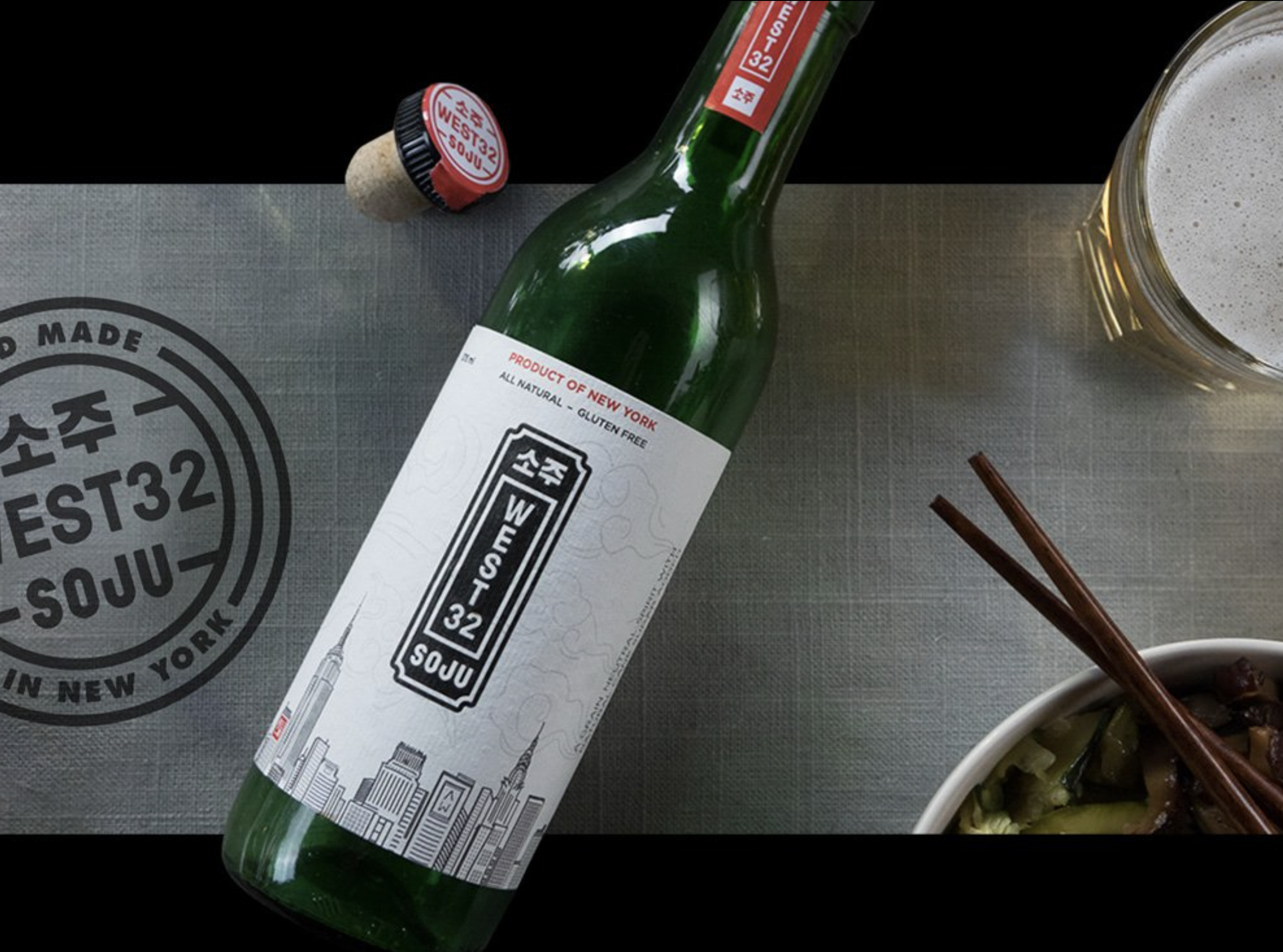 Region:
Region: